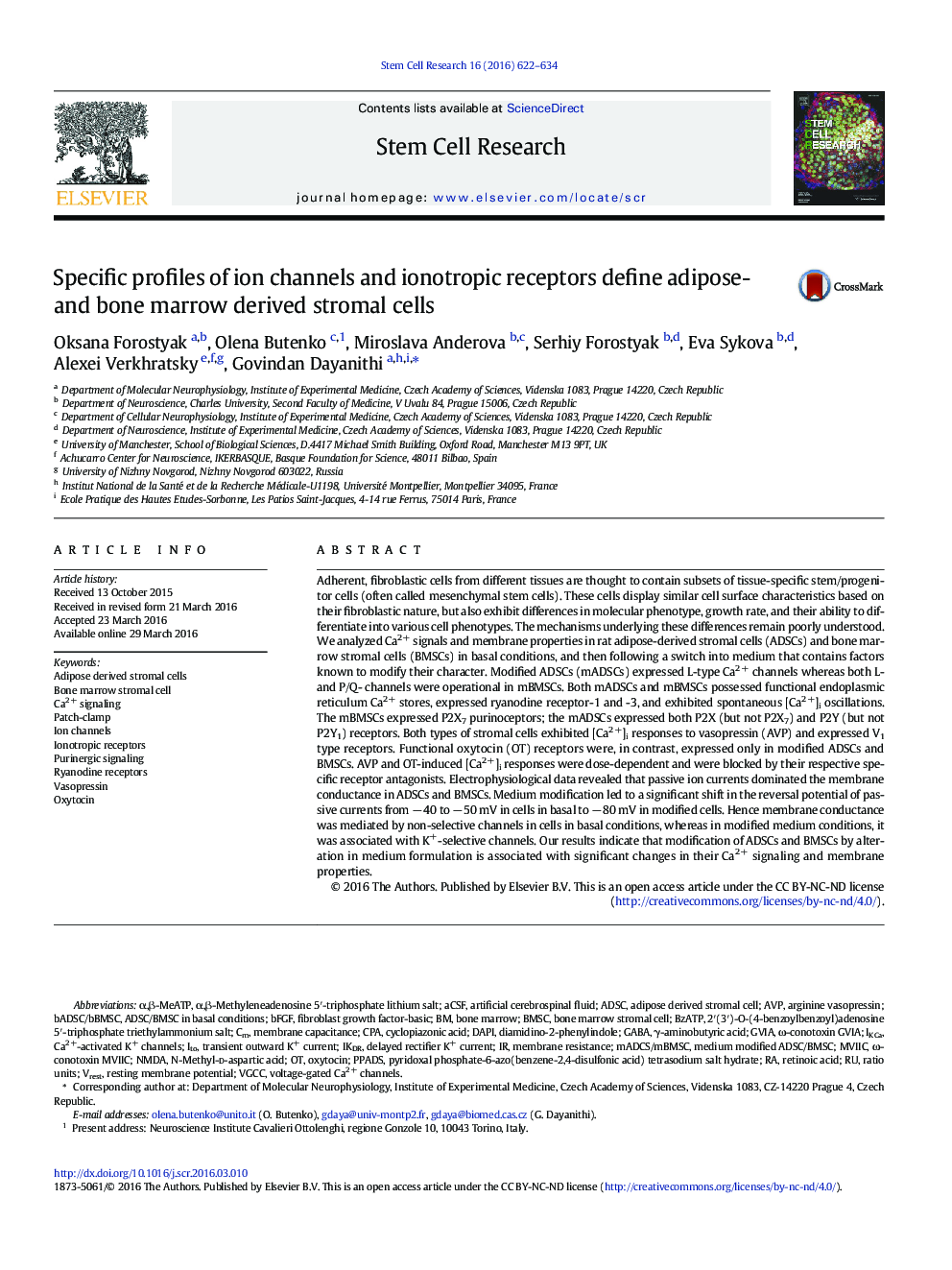| Article ID | Journal | Published Year | Pages | File Type |
|---|---|---|---|---|
| 2094024 | Stem Cell Research | 2016 | 13 Pages |
•BMSCs, but not ADSCs, express P/Q-type Ca2 + channels after modification of culture conditions.•L-type Ca2 + channels become expressed in ADSCs and BMSCs after modification.•P2X7 receptor is expressed in BMSCs, but not ADSCs.•Vasopressin V1R is expressed by ADSCs and BMSCs in basal and modified conditions.•Oxytocin receptors are not expressed in ADSCs and BMSCs in basal conditions, but appear after modification.
Adherent, fibroblastic cells from different tissues are thought to contain subsets of tissue-specific stem/progenitor cells (often called mesenchymal stem cells). These cells display similar cell surface characteristics based on their fibroblastic nature, but also exhibit differences in molecular phenotype, growth rate, and their ability to differentiate into various cell phenotypes. The mechanisms underlying these differences remain poorly understood. We analyzed Ca2 + signals and membrane properties in rat adipose-derived stromal cells (ADSCs) and bone marrow stromal cells (BMSCs) in basal conditions, and then following a switch into medium that contains factors known to modify their character. Modified ADSCs (mADSCs) expressed L-type Ca2 + channels whereas both L- and P/Q- channels were operational in mBMSCs. Both mADSCs and mBMSCs possessed functional endoplasmic reticulum Ca2 + stores, expressed ryanodine receptor-1 and -3, and exhibited spontaneous [Ca2 +]i oscillations. The mBMSCs expressed P2X7 purinoceptors; the mADSCs expressed both P2X (but not P2X7) and P2Y (but not P2Y1) receptors. Both types of stromal cells exhibited [Ca2 +]i responses to vasopressin (AVP) and expressed V1 type receptors. Functional oxytocin (OT) receptors were, in contrast, expressed only in modified ADSCs and BMSCs. AVP and OT-induced [Ca2 +]i responses were dose-dependent and were blocked by their respective specific receptor antagonists. Electrophysiological data revealed that passive ion currents dominated the membrane conductance in ADSCs and BMSCs. Medium modification led to a significant shift in the reversal potential of passive currents from − 40 to − 50 mV in cells in basal to − 80 mV in modified cells. Hence membrane conductance was mediated by non-selective channels in cells in basal conditions, whereas in modified medium conditions, it was associated with K+-selective channels. Our results indicate that modification of ADSCs and BMSCs by alteration in medium formulation is associated with significant changes in their Ca2 + signaling and membrane properties.
Graphical abstractThe schematic diagram describes the differential expression of ion currents and Ca2 + channels and receptors in ADSCs and BMSCs under basal and modified conditions.Figure optionsDownload full-size imageDownload high-quality image (211 K)Download as PowerPoint slide
